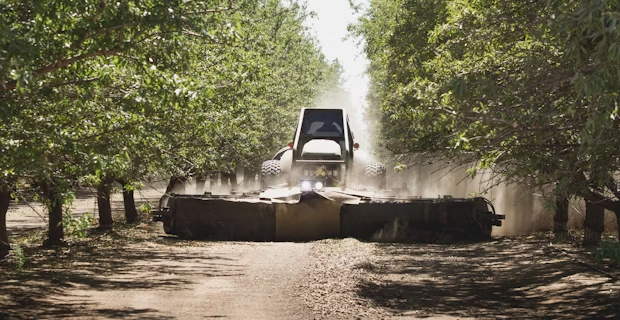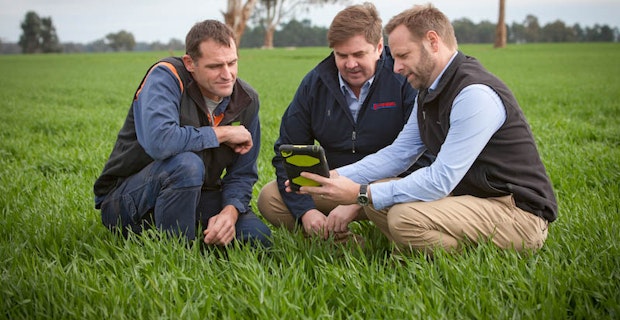As is the case in many farming operations, orchards tend to be ever-expanding in order to maintain economies of scale. With an increase in size comes an additional burden of managing workflows and growing information streams, which raises a question: how can growers and managers take care of this extra workload without it taking them out of the orchard too much?
Agworld account manager for Eastern States Charles DuBourg works with many orchardists throughout Victoria and New South Wales and deals with these kinds of dilemmas on a daily base. “I am used to working with a diverse range of orchards through my previous role as technical services manager at IK Caldwell as well as in my current role at Agworld, and am familiar with the challenges they face. Orchardists increasingly operate on a world market stage, and with that comes world market scale and prices; those that are looking to stay in business in the long term, often see themselves forced to grow continually.”

“We recently spoke to one of our clients in California, Blake Vann, who runs the Vann Brothers almond orchard in Williams, CA., with 13,000 acres of almonds, over 1000 acres of walnuts and their own hulling and shelling operation, one of the bigger players in the industry. Blake plants an additional 1000 acres of almonds on average per year and knows what it’s like to manage a large workforce and have information come at him from many different angles: it’s difficult to manage”
But, Mr DuBourg added, it’s often the operator’s mindset that dictates how a management burden is handled. “Those that stick to pen and paper for record keeping and chase information off their workers manually, often find themselves way busier than they need to be; there is plenty of technology out there to help simplify this process. Blake Vann for example told us that he communicates with his agronomists and managers via Agworld to simplify the lines of communication, while also making this information automatically available for auditing purposes and as a source of information for next season.

Got what it takes to join the Agworld team? We’re looking for talented individuals to help us deliver innovative solutions in agriculture.
“This is really where I see that technology can play a big role for orchardists in future: instead of them becoming office-bound due to digitisation, they will be able to turn technology into an advantage that helps them manage their operations while in the orchard. Where different technologies provide an increasing amount of orchard management options, it is important to know what can work in your specific situation. As Blake Vann worded it: “Having the backup history of what you’ve used in previous seasons is invaluable. To be able to look at the history and see what you’ve done out there helps you make decisions as you go ahead.”
Looking toward the future, Mr DuBourg sees orchard management moving towards a more cloud based and collaborative model: “Information is everything nowadays, but we often get an overload; it is all about having the right information to make decisions. It is easy to hire extra staff to manage larger operations, but to get the right information to everyone and make sure that they are connected to the right people and right sources of information, that is the hard part.”

“In the end, all data we collect in a farming operation, from grower to agronomist and everyone else involved, should give us the ability to make better and more profitable decisions so we can improve agronomic and financial results. Having everyone in the orchard connected and collaborating on the same platform, will result in a solid set of data on which good decisions can be based in future. Or, like Blake Vann told us: “You’ve got to know where you’ve been, to know where you’re going.”
This article originally appeared in TREETOP.COM.AU
Download Article




